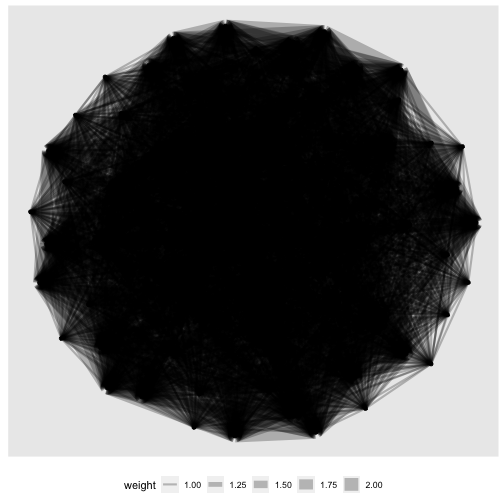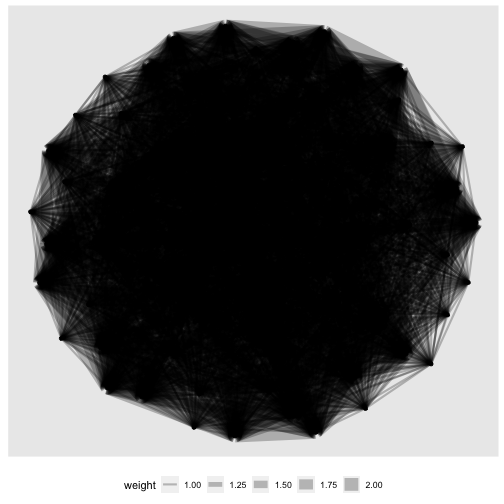PEER Advanced Field School 2023
Bipartite Networks
Eric Brewe
Professor of Physics at Drexel University
15 June 2023, last update: 2023-06-29
Let's check out bipartite networks
I took the network file we have been working on and did two things. 1. I exported it as a tibble, and 2. I added a new variable Ate_Garbage_Plate, and saved it as a csv file in the data folder. This is because we have to rebuild this as a bipartite graph.
Let's load this new csv
```rbipartite_df <- read_csv(here("data", "bipartite_df.csv"))```Let's take a look at this
Bipartite Networks are sometimes known as affiliation networks.
In this example we might imagine that people who eat garbage plate (a Rochester classic), like to eat garbage plate together?
```rglimpse(bipartite_df)```## Rows: 60## Columns: 5## $ name <dbl> 5106, 6633, 7599, 4425, 2495, 6355, 8810, 3877, 1554…## $ AMPM <chr> "morning person.", "morning person.", "night owl.", …## $ Dessert <chr> "Brownies", "I don't care for dessert.", "Ice Cream"…## $ Pages <dbl> 350, 12, 300, 0, 264, 4, 289, 550, 349, 300, 424, 42…## $ Ate_Garbage_Plate <dbl> 1, 0, 1, 1, 0, 1, 0, 1, 0, 0, 1, 0, 0, 1, 1, 1, 0, 0…Let's make this a network
b_gr <- bipartite_df %>% select(name, Ate_Garbage_Plate) %>% as.matrix(.) %>% graph.incidence(.) %>% as_tbl_graph()Let's treat this as a network
There are plenty of things you can do with a bipartite network, but mostly I focus on the projections.
b_gr %>% bipartite_projection() -> b_grNotice that there are two projections, one which is a person-person projection with 60 nodes, one that is a network of Garbage Plate eaters with 2 nodes.
Let's look at the person-person network
First, the person-person network
p_gr <- b_gr$proj1p_gr %>% ggraph(.) + geom_edge_link(alpha = .25, aes(width = weight)) + geom_node_point() + theme(legend.position="bottom")
Ugh...way too dense! We need to do some sort of data reduction. That is a different class. But...
Let's do some data reduction
One common way is to identify the backbone of the network (again, there a bunch of ways to do this, so let's choose an easy one. )
p_gr %>% ggraph(., layout = 'backbone') + geom_edge_link(alpha = .25, aes(width = weight)) + geom_node_point() + theme(legend.position="bottom")
...and it doesn't look different (likely because as Rebeckah pointed out is because this is based on a random variable)